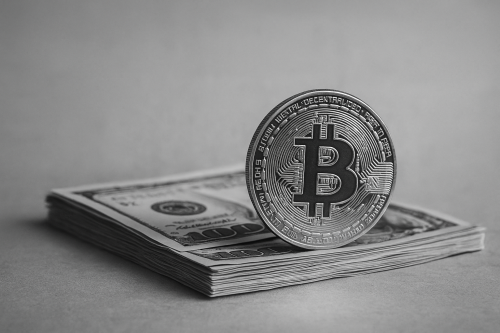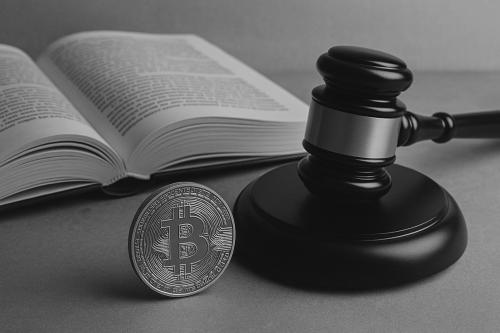The Global Anti-Corruption Initiative of the IRU
IRU Secretary General, Umberto de Pretto, unveils the scale and damages of corruption on roads and explains how the world road transport organisation is tackling this issue head on.
What is the Global Anti-Corruption Initiative?
In short, it’s a joint effort between the IRU and United Nations Global Compact to fight extortion and corruption along major road transport corridors. We’re working together to secure the sustainable development of global supply chains, hence economies, worldwide.
Is this a widespread problem?
Definitely! Corruption is mostly found in emerging economies, but corrupt practices also exist in industrialised ones. However, many people don’t even realise that transport operators today suffer from lengthy non-harmonised administrative procedures and overregulation, which creates an environment conducive to corruption or other illicit activities on roads and at borders.
You can see in our latest figures that drivers spend up to 57% of time en-route queuing at borders in some regions, with over 1/3 of freight costs going towards illicit payments. But again, people simply aren’t aware how harmful corruption and illicit practices on roads can be to international trade and the development of national and global economies. They increase legal and operational uncertainty and add additional costs to the entire logistics chain and end product. In fact, as much as USD 1.6 trillion is lost globally each year according to estimates from the World Bank. This has major negative economic and political consequences, so you can understand why fighting corruption has become one of the priority issues for governments and international organisations.
How did you address this issue?
Our initiative collected information on cases of corruption along major international trade routes on five continents. Road transport companies and truck drivers completed an online questionnaire to help us identify areas of business and administrative activities, as well as geographic locations that are most vulnerable to extortion and bribery.
The survey collected information on corruption cases in 34 countries altogether. We received 112 questionnaires filled out by transport operators from the Middle East, 68 from Africa, 13 from Latin America, and 281 from across Eurasia. But it was actually quite challenging to find professionals willing to share their experiences, because of the contradiction of being both a victim of corruption and giving in to it.
The results were nonetheless compiled into a final report that provides specific recommendations to combat such corruption. The report was presented to the Global Compact 10th Principle Advisory Group in December 2014 on International Anti-Corruption Day. It will also be presented to governments of participating states and leading global international groups, including the G8, G20 and Davos Forum. We want to draw attention to the negative impact of corruption on road transport and put a stop to this major impediment to trade.
What came out as major corruption “hot spots” on roads?
Well, the survey helped us identify the major areas where corrupt practices are most likely to occur at domestic and institutional level.
"Recipients" of corruption on roads include security, state and municipal police officers or authorities, Customs officers at border crossing and Customs clearance checkpoints. You also have road police and patrol officers, transport control officers who check the weight and size of truck loads or document their validity at border crossing checkpoints and en-route. There are also sanitary, veterinary and phyto-sanitary inspection authorities and border control police officers who check drivers’ passports and visas. Last but not least, you have transport business operators who are subject to corrupt practices associated with the registration and issuance of appropriate licences and permits.
But overall, with few exceptions, corruption levels in the international road transport business show a close correlation with the World Bank Logistics Performance Index and Transparency International Corruption Perceptions Index.
So what is the actual cost of corruption on roads?
It depends because the level of corruption varies quite a lot from one country to the next. Our survey gave us an average corruption cost per carrier of USD 164.4 per round trip. The survey revealed that the highest corruption levels were observed in the Middle East (USD 183.0) and Eurasia (USD 185.7). But corruption levels can also vary significantly within the same region, so the monetary value of bribes recorded in a number of countries was rather moderate. Yet, if you multiply these small amounts by only half of the number of round trips undertaken in these countries each year, we’re talking huge amounts!
Moreover, in a number of registered cases, considerable sums exchanged hands. For instance, there was a Eurasian carrier that paid a Customs officer $2,000. Another Eurasian carrier paid a transport control officer $1,200. There was also a carrier at a border crossing checkpoint in the Middle East that paid State police and Customs officers $2,250!
How do transport operators compensate for such costs?
Well, corruption takes a heavy toll on cross-border haulage and trade in general. Some checkpoints even unofficially post a “price list” for quick border and customs clearance without any hassles. We even observed some cases of extortion that turned into routine practice. For example, a Latin American haulier reported daily extortion by national police officers, which went on for years and was presented to hauliers as an established rule.
Transport operators quite often add “bribery expectations” to their freight cost estimates, which in turn adds to the cost of export-import operations. Goods become less competitive on international markets and consumers incur additional costs. Eventually, the total effective demand goes down together with other social and economic indicators. These corrupt practices place a heavy burden, not only on transport operators, but on economies and citizens.
There are business community stereotypes that say corruption can’t be cured. But these need to be countered with positive models and information on anti-corruption practices in cross-border road transport and border crossing procedures that have been successfully implemented in various countries.
Border crossings seem to be particularly conducive to corruption. Is that true?
Yes, that’s correct! In international road transport, bribes are mostly collected while trucks line up to go through border crossing checkpoints. Two thirds of all bribes and extortion from commercial transport operators fall into that category. The remaining third is collected en-route.
It’s unfortunate, because the World Customs Organization and other multilateral organisations are continuously working to fight corruption. But despite their strenuous efforts, Customs still generally account for nearly half of all cases of extortion, under pretexts that they can expedite full border clearance at checkpoints by helping circumvent lengthy document processing procedures, or by promising to drop charges of “suspicion” of drug trafficking which would otherwise call for a “super-thorough” and extra-lengthy search for drugs, including drilling through truck bodies. So in some cases, officials are bribed in order to preserve the cargo, especially if it consists of fruits or live animals.
But transport control bodies rank second on the corruption scale. Bribes paid by road carriers in relation to actual or alleged noncompliance with truck load regulations or transport document standards represent 17% of the total bribe payments.
Finally, what are the recommendations to fight such corruption on roads?
An important remedy against bribery and extortion is the multilateral alignment of legal and regulatory provisions governing transport and cross-border haulage. Joining international agreements and UN legal instruments, such as the TIR and Harmonization Conventions, has proven to be highly effective in pushing down the level of corruption. Even more so than all punitive measures taken under the applicable national law against “bribe takers wearing rank insignia” at Customs and border crossing checkpoints.
These two UN conventions help reduce waiting lines and traffic delays at border crossing checkpoints. This in turn eliminates the need to expedite border control clearance through illicit payments. Regrettably, many countries have not yet ratified and implemented these UN trade facilitation instruments.
So in the meantime, it’s crucial to keep raising awareness among all cross border transport stakeholders. Information on the scale of corruption, losses incurred by the public, businesses and national economies from corrupt practices, the adverse impact of corruption on trade, transport and transit, and factors that cause corrupt practices, should all be disseminated broadly and continuously.
This study has highlighted the urgency to further liberalise the transport market. The more regulated the transport business, the more flexibility is available to controlling officials who can abuse their power. More liberal foreign trade and other open economy procedures would eliminate the pretexts for bribery both en-route and at border crossings.
But corruption is something that we can effectively fight, especially if we implement the IRU motto, "working together for a better future."



